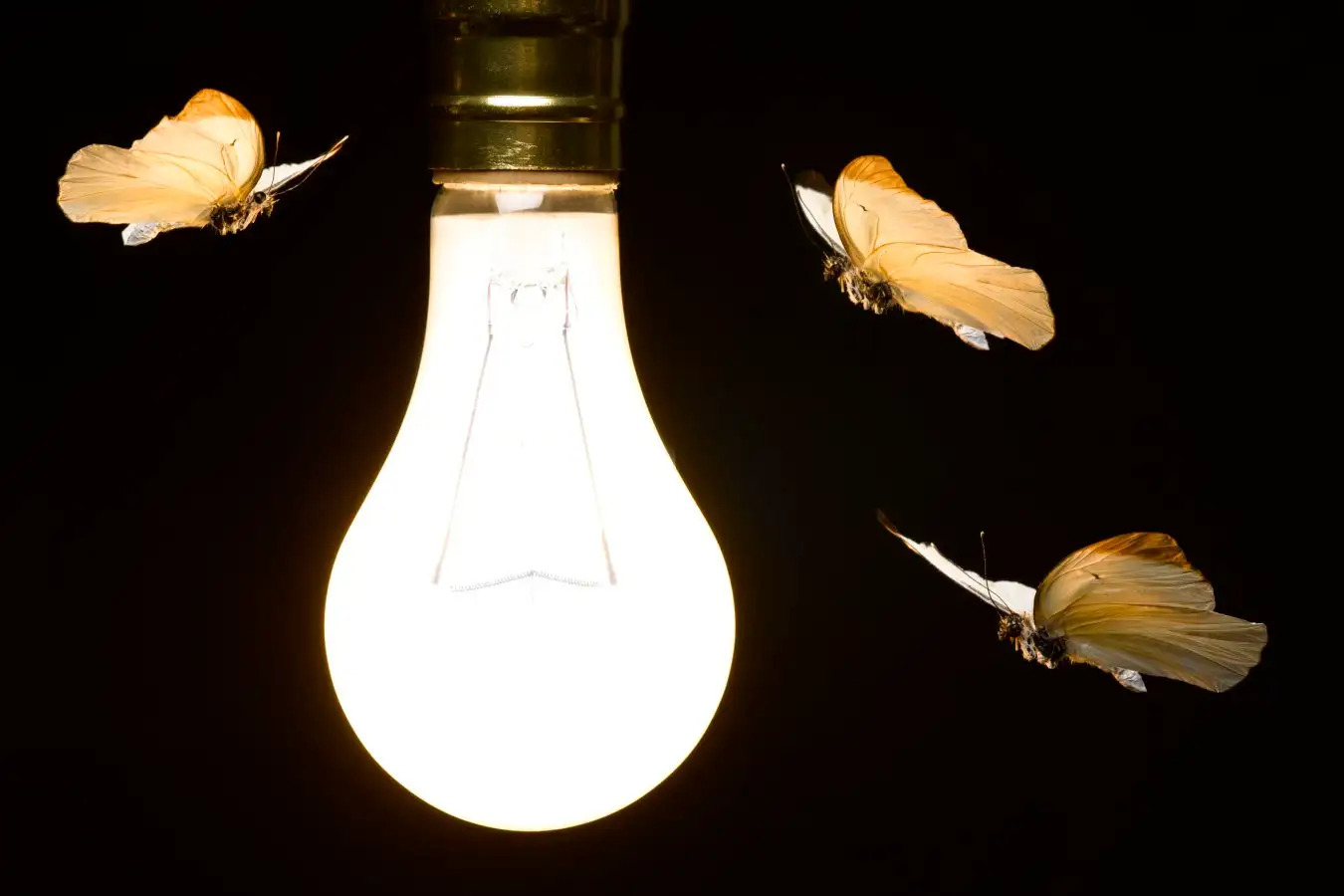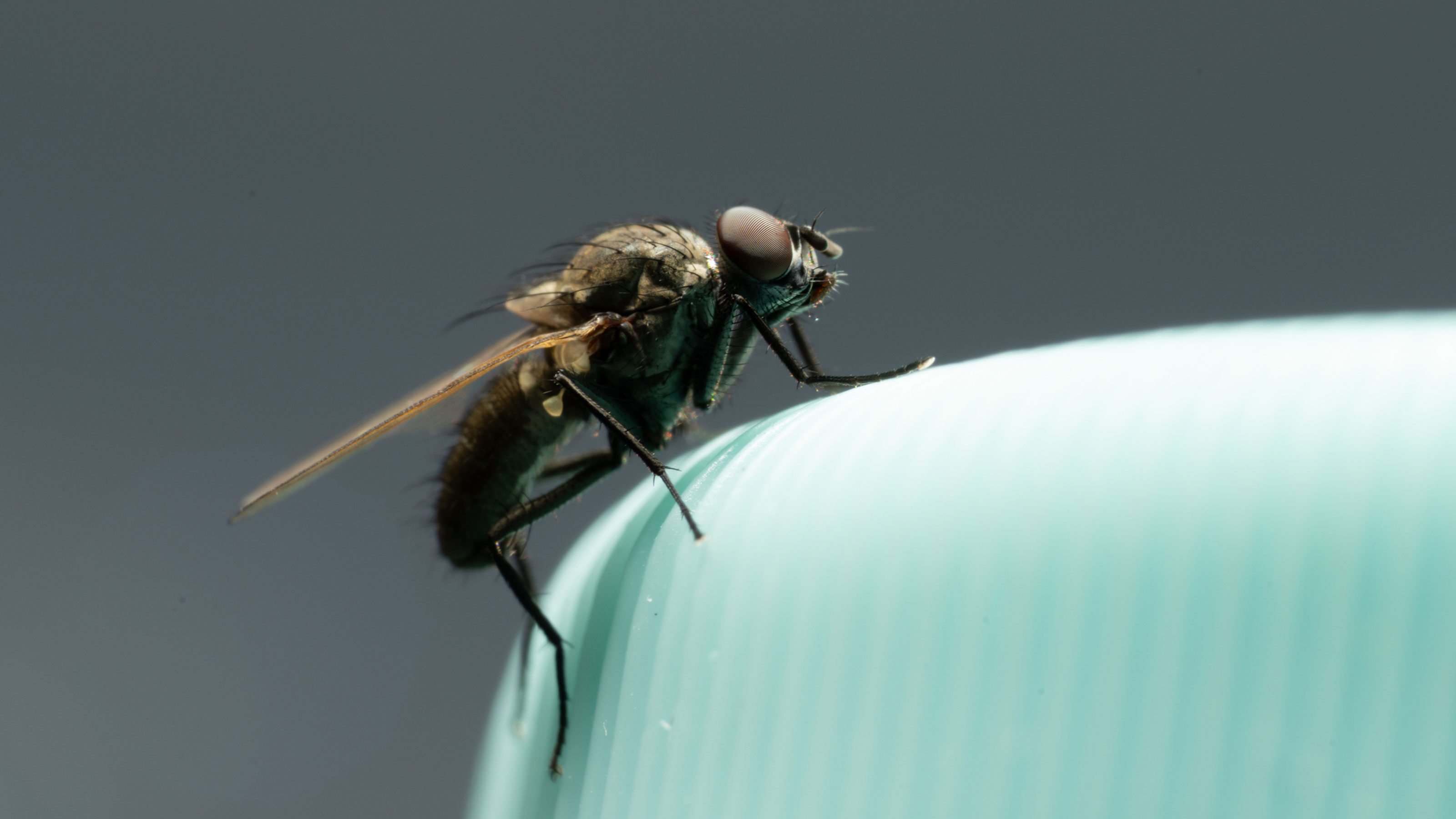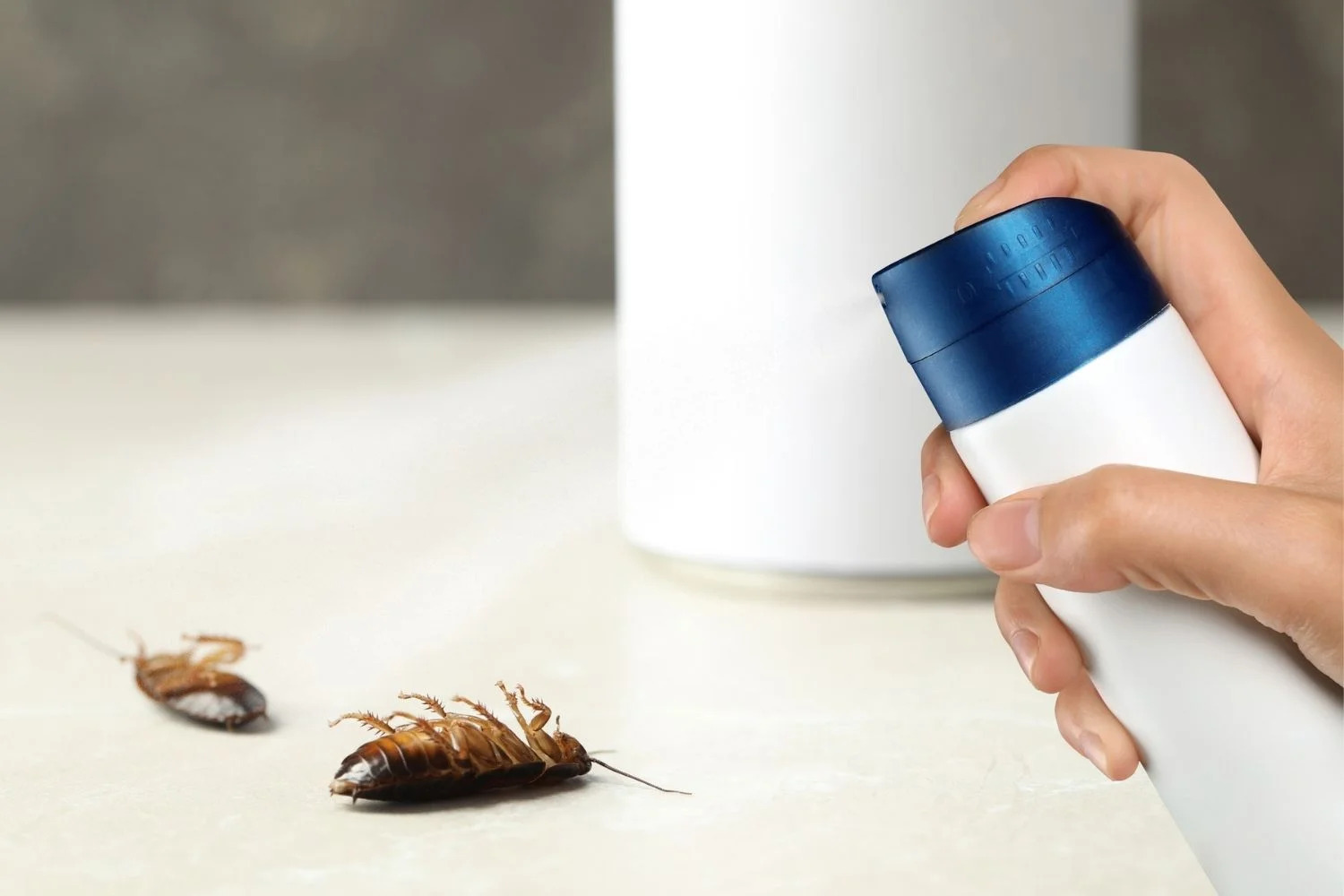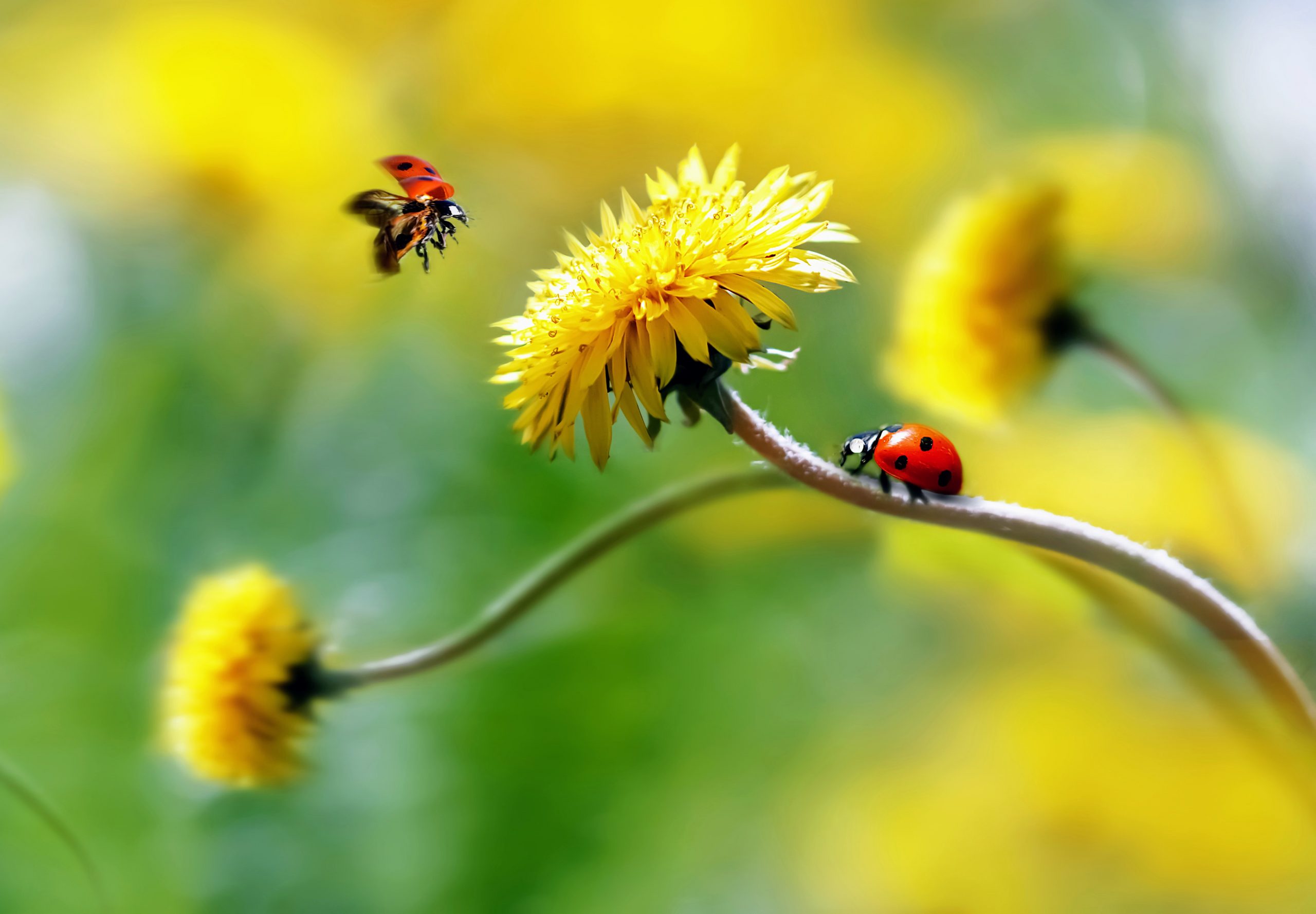Home>Gardening Tips and Tricks>Problem Solving>How To Get Rid Of Insects Attracted To Light


Problem Solving
How To Get Rid Of Insects Attracted To Light
Modified: January 22, 2024
Learn effective problem solving techniques to eliminate insects attracted to light. Get expert tips and tricks to eradicate this common pest issue and enjoy a bug-free environment.
(Many of the links in this article redirect to a specific reviewed product. Your purchase of these products through affiliate links helps to generate commission for Chicagolandgardening.com, at no extra cost. Learn more)
Table of Contents
Introduction
Welcome to the comprehensive guide on how to get rid of insects attracted to light. If you’ve ever been bothered by pesky bugs swarming around your porch lights or buzzing near your lamps, you’re not alone. Insects, such as moths, flies, and mosquitoes, have a natural affinity for light sources. While this may be a nuisance, it can also be a health concern as some insects carry diseases.
In this article, we will explore effective methods to eliminate insects attracted to light and create a pest-free environment in and around your home. Whether you’re dealing with a minor annoyance or a full-blown infestation, these tips and techniques will help you regain control and enjoy your space without the hassle of unwanted bugs.
We’ll start by discussing why insects are attracted to light in the first place. Understanding their behavior and the underlying reasons for their attraction will enable us to develop strategies to minimize their presence. We’ll then delve into practical solutions, ranging from simple steps such as switching to alternative lighting options, to more advanced methods like using natural repellents and installing insect traps.
It’s important to note that every situation is unique, and certain methods may work better for specific insect types or environments. Feel free to adapt and combine strategies to suit your needs. Let’s dive in and discover the best ways to keep those insect pests at bay and enjoy the light without the unwanted company.
Understanding the Insects Attracted to Light
Before diving into how to get rid of insects attracted to light, it’s crucial to understand why they are drawn to it in the first place. The primary reason lies in their natural navigation system.
Most nighttime insects rely on natural sources of light, such as the moon and stars, to navigate and orient themselves. These sources of light remain at a constant angle and distance, allowing insects to maintain a steady flight path.
However, artificial light sources, such as porch lights, street lamps, and indoor lighting, can be confusing for insects. The intensity and proximity of these light sources can disrupt their normal navigation patterns, causing them to become disoriented and fixated on the light.
Among the insects commonly drawn to light are moths, flies, beetles, and mosquitoes. Moths, in particular, are known for their strong attraction to artificial light. The reason behind this lies in their evolved behaviors and physiological traits.
Moths use natural light sources, such as the moon, for navigation and orientation. When they encounter an artificial light source, their internal compass gets disrupted, and they either fly in erratic patterns or spiral around the light source. This behavior is known as positive phototaxis.
Flies are also attracted to light but have different reasons for their behavior. While flies are more drawn to the warmth generated by light sources, they may get disoriented like moths and end up circling the light.
As for mosquitoes, their attraction to light is not as strong as their affinity for carbon dioxide and body heat. However, light can still serve as a visual cue for mosquitoes to locate potential hosts.
Each insect species has its own unique behaviors and characteristics, but they all share a common tendency to become fixated on artificial light sources. By understanding their natural navigation systems, we can develop effective strategies to minimize their attraction to light and keep them at bay.
Determining the Source of Attraction
Before you can effectively get rid of insects attracted to light, it’s important to identify the specific light sources that are drawing them in. By determining the source of attraction, you can take targeted steps to address the issue and reduce the insect population around your home. Here are some steps to help you in this process:
1. Observe and locate: Take the time to observe and identify the specific areas where insects are gathering around lights. This may include porch lights, outdoor lamps, or even bright indoor lighting. Pay attention to the intensity and duration of the attraction to better understand the extent of the problem.
2. Assess light temperature and color: Insects are attracted to specific light temperatures and colors. Generally, insects are more attracted to warmer, yellow or white lights. Consider changing your light bulbs to options with lower color temperature or specialized insect-repellent bulbs that emit wavelengths less attractive to bugs.
3. Evaluate lighting placement: Analyze the placement of your lights, both indoors and outdoors. Consider whether there are alternative lighting arrangements that can help minimize the attraction. For outdoor lights, you may want to redirect the light source away from seating areas or replace them with motion-sensor lights that only illuminate when activity is detected.
4. Check for secondary attractions: In some cases, insects may be drawn to light sources indirectly. For example, outdoor lights near areas with standing water can attract mosquitoes. Examine the surrounding environment for other factors that may contribute to insect populations, such as stagnant water, garbage bins, or nearby vegetation.
5. Keep track of seasonal patterns: Be aware of any seasonal variations in insect activity and attraction to light. Certain insects may become more prevalent during specific times of the year. Understanding these patterns will help you implement targeted control measures when needed.
By taking the time to determine the source of attraction, you can develop a more effective plan to eliminate the insects. Whether it involves adjusting lighting options, changing the placement of lights, or addressing secondary attractions, the goal is to disrupt the insects’ navigation and reduce their attraction to the light sources around your home.
Eliminating Light Sources
If you want to get rid of insects attracted to light, one effective approach is to eliminate or reduce the light sources that draw them in. By minimizing the availability of attractive light, you can discourage insects from gathering around your home. Here are some strategies to help you eliminate light sources:
1. Turn off unnecessary lights: One of the simplest ways to reduce insect attraction is by turning off lights when they are not needed. Assess your lighting needs and keep only essential lights on. This can significantly reduce the number of insects swarming around your home.
2. Use motion-sensor lights: Motion-sensor lights can be a practical solution for outdoor areas. These lights only activate when movement is detected, providing illumination when necessary while minimizing constant attraction for insects. This not only saves energy but also reduces the appeal for bugs.
3. Opt for yellow or red bug lights: Insects are less attracted to yellow or red lights compared to white or bright white lights. Consider replacing your regular outdoor bulbs with yellow bug lights, specifically designed to reduce insect attraction. These bulbs emit light at wavelengths less appealing to bugs.
4. Adjust indoor lighting: Take a look at your indoor lighting setup as well. Consider replacing white or fluorescent lights with amber or yellow bulbs. These options emit warmer and less attractive light for insects while providing a cozy and inviting ambiance for you.
5. Install window coverings: If insects are attracted to your indoor lights and invade your home, installing window coverings, such as blinds or curtains, can help reduce their visibility from the outside. By blocking the light from escaping, you can minimize the attraction and keep insects out.
6. Use outdoor lighting alternatives: If you enjoy spending time outdoors but want to minimize insect attraction, explore alternative lighting options. Consider using solar-powered lanterns, citronella torches, or candles enclosed in bug-repellent containers. These alternatives provide softer lighting while helping to deter insects.
By eliminating or reducing light sources, you can diminish the attractiveness to insects and discourage them from swarming around your home. Remember, even small changes can make a difference in reducing the number of bugs attracted to light.
Sealing Entry Points
In addition to eliminating light sources, another crucial step in getting rid of insects attracted to light is sealing off potential entry points. By blocking their access to your home, you can prevent insects from entering and being drawn to the light sources inside. Here are some strategies to help you effectively seal entry points:
1. Inspect and caulk openings: Conduct a thorough inspection of your home, paying close attention to areas where insects can enter. Look for gaps around windows, doors, vents, utility openings, and pipes. Use caulk or weatherstripping to seal these openings and prevent insects from squeezing in.
2. Repair damaged screens: Check and repair any damaged screens on windows and doors. Even a small tear or hole can serve as an entry point for insects. If necessary, replace the screens to ensure they are in good condition and tightly fitted.
3. Seal cracks and crevices: Examine the exterior walls of your home for cracks, crevices, and gaps. Use a silicone-based sealant or foam insulation to fill these openings. Pay attention to areas around utility lines, cable wires, and where different building materials meet.
4. Maintain proper door sweeps and thresholds: Make sure your doors have tight-fitting sweeps and thresholds to block gaps at the bottom. Replace worn-out sweeps and adjust thresholds if necessary to provide a proper seal.
5. Secure vents and openings: Install mesh screens or covers over vents and openings in your home’s attic, crawl spaces, and foundation. This prevents insects from entering through these access points while still allowing for proper ventilation.
6. Clear vegetation from the exterior: Trim bushes, shrubs, and tree branches away from the exterior walls of your home. Insects can use these as bridges to gain access to your home. By keeping vegetation clear, you create a barrier that makes it more difficult for bugs to reach the entry points.
By sealing entry points, you create a physical barrier that prevents insects from entering your home and being attracted to the light sources inside. Remember to regularly inspect and maintain these seals to ensure their effectiveness in keeping bugs out.
Using Natural Repellents
If you prefer to use natural methods to repel insects attracted to light, there are several options available that can help deter them without the use of harsh chemicals. Natural repellents provide an environmentally-friendly approach while still effectively reducing insect presence. Here are some natural repellents to consider:
1. Citronella: Citronella is a well-known natural insect repellent. It can be found in the form of candles, torches, and oil. The strong scent of citronella masks the attractive scent of humans and can help keep mosquitoes, flies, and other flying insects at bay.
2. Essential oils: Certain essential oils have insect-repelling properties. Oils such as lavender, eucalyptus, peppermint, and lemongrass are known to repel insects. Mix a few drops of these oils with a carrier oil, such as coconut oil, and apply it to your skin or clothing as a natural repellent.
3. Garlic: The strong odor of garlic can act as a natural deterrent for insects. Create a garlic spray by blending garlic cloves with water and spray it around areas where insects are commonly found. This can help repel mosquitoes, flies, and other bugs.
4. Neem oil: Neem oil is derived from the neem tree and has insecticidal properties. Dilute neem oil with water and spray it onto plants, windowsills, or other surfaces where insects are problematic. It acts as a natural repellent against a wide range of insects.
5. Marigolds: Marigold plants emit a scent that bugs find unappealing. Planting marigolds in your garden or placing potted marigolds near light sources can help deter insects from gathering around the lights.
6. Vinegar: A mixture of vinegar and water can be used as a natural deterrent for ants and other crawling insects. Spray the solution around entry points, windowsills, or areas where insects are a problem to deter them and disrupt their trail.
While natural repellents can be effective in reducing insect presence, it’s important to note that they may not completely eliminate the problem. Regular application and reapplication may be necessary, especially in areas with high insect activity.
These natural repellents provide an alternative to chemical-based products, allowing you to repel insects attracted to light in a more eco-friendly and natural way. Experiment with different options to find the ones that work best for you and your specific insect problem.
Installing Insect Traps
If you’re dealing with a significant influx of insects attracted to light, installing insect traps can be an effective strategy to capture and reduce their population. Insect traps act as a lure, attracting insects and preventing them from reaching the light sources in your home. Here are some types of traps you can consider:
1. Electric insect zappers: Electric insect zappers use ultraviolet (UV) light to attract insects. When the insects come into contact with the electric grid, they are electrocuted and killed. These traps are effective for controlling flying insects, such as flies, moths, and mosquitoes, but may not be as effective against all types of insects.
2. Sticky traps: Sticky traps, also known as flypaper, use adhesive surfaces to capture insects. They can be placed near light sources or in areas where insects congregate, such as windows or doorways. The sticky surface traps the insects, preventing them from reaching the light source and helping to reduce their population.
3. Pheromone traps: Pheromone traps emit synthetic versions of insect hormones or substances that attract specific insects. These traps are effective for targeting certain types of pests, such as pantry moths or fruit flies. By luring and trapping the insects, you can disrupt their breeding cycle and reduce their numbers.
4. Indoor bug trappers: Indoor bug trappers are compact devices that use UV light and a fan to attract and capture flying insects. The insects are pulled into the device and trapped in a collection tray, preventing them from reaching your lights. These traps are safe to use indoors and are effective for controlling flies, mosquitoes, and other flying pests.
5. DIY traps: You can also create your own homemade traps using common household items. For example, a mixture of sugar, vinegar, and dish soap can be used to attract and trap fruit flies. Another option is to place a shallow dish of soapy water under a bright light source to capture insects attracted to the light.
When using traps, it’s important to place them strategically around light sources and areas where insects are prevalent. Regularly clean and maintain the traps to ensure their effectiveness. Remember that traps alone may not completely eliminate the insect problem, but they can significantly reduce their population and limit their access to the light sources in your home.
Maintaining a Clean Environment
Keeping a clean environment is crucial in preventing and reducing the presence of insects attracted to light. By eliminating potential food sources and breeding grounds, you can make your home less appealing to insects and discourage their presence. Here are some important steps to help maintain a clean environment:
1. Regular cleaning: Regularly clean and vacuum your home to remove crumbs, spills, and other food debris that may attract insects. Pay attention to kitchen areas, dining spaces, and other areas where food is consumed or prepared.
2. Proper food storage: Store food in airtight containers to prevent access by insects. Ensure that pantry items, pet food, and fruits are securely sealed to minimize attractants for bugs. Regularly inspect and discard any expired or spoiled items.
3. Clean up spills promptly: Wipe up spills and crumbs immediately to minimize food sources for insects. Pay attention to areas around sinks, countertops, and eating areas to prevent attracting bugs like ants and flies.
4. Dispose of trash properly: Ensure that trash bins are tightly sealed and regularly emptied. Clean the bins and the surrounding area to prevent odors and attractants that may lure insects. Consider using trash bins with lids and liners to minimize access.
5. Maintain a clutter-free space: Remove clutter and unnecessary items from your home, as they can provide hiding places and breeding grounds for insects. Regularly declutter and organize your living areas, reducing potential habitats for bugs.
6. Clean outdoor areas: Keep outdoor areas clean and tidy. Regularly sweep patios, balconies, and other outdoor spaces to remove debris and food particles. Trim vegetation and remove standing water sources to discourage insect breeding.
7. Prevent moisture buildup: Insects are attracted to damp environments. Take steps to address any moisture issues in your home, such as fixing leaks, improving ventilation, and using dehumidifiers if necessary. This will help make your home less appealing to bugs.
By maintaining a clean environment, you can minimize the factors that attract insects to your home. These practices not only help deter bugs but also promote a healthier and more comfortable living space for you and your family.
Seeking Professional Pest Control
If despite your best efforts, you find that the insect problem persists or becomes overwhelming, it may be time to consider seeking professional pest control services. Professional pest control experts have the knowledge, experience, and resources to effectively identify and eliminate insect infestations. Here are some reasons why seeking professional help may be necessary:
1. Expertise and knowledge: Pest control professionals have a deep understanding of insect behavior, biology, and the most effective control methods. They can identify the specific insect species causing the problem and develop a targeted treatment plan to resolve the infestation.
2. Integrated Pest Management (IPM) approach: Professional pest control companies follow Integrated Pest Management practices. This approach involves utilizing a combination of techniques, including inspection, monitoring, exclusion, and targeted treatments. IPM focuses on long-term prevention and minimizing the use of pesticides, making it a more sustainable and environmentally-friendly approach.
3. Safety and proper handling: Pest control professionals have the necessary training to handle and apply pesticides safely. They know how to identify potential hazards and take the appropriate precautions to protect your family, pets, and the environment. They can also provide guidance on any necessary precautions or preparations before and after treatment.
4. Access to specialized tools and products: Professional pest control companies have access to specialized equipment, tools, and products that may not be readily available to consumers. These resources allow them to effectively treat and control even the most stubborn insect infestations.
5. Long-term prevention: Pest control professionals not only address current infestations but also provide recommendations and solutions for long-term prevention. They can identify potential entry points, advise on structural repairs, and offer guidance on how to make your home less attractive to insects in the future.
6. Time and convenience: Dealing with a severe or recurring insect infestation can be time-consuming and frustrating. Professional pest control services save you the hassle and stress by efficiently addressing the problem, allowing you to focus on other important aspects of your life.
When choosing a pest control company, do your research and select a reputable and licensed provider. Consult with multiple providers, compare their services, pricing, and guarantees, and read customer reviews to ensure you’re making an informed decision.
Professional pest control can be an effective and efficient solution for combating stubborn insect infestations. If your efforts to eliminate insects attracted to light have been unsuccessful, it’s wise to seek the expertise of professionals who can help bring the situation under control.
Conclusion
Dealing with insects attracted to light can be frustrating, but with the right strategies, you can minimize their presence and regain control of your space. By understanding the insects’ behavior, determining the source of attraction, and taking targeted steps to eliminate light sources or seal entry points, you can significantly reduce the number of bugs around your home.
Using natural repellents, such as citronella, essential oils, or garlic, provides an environmentally-friendly approach to deter insects. Installing traps, such as electric zappers or sticky traps, can help capture and reduce their population. Additionally, maintaining a clean environment by regularly cleaning, proper food storage, and eliminating clutter will make your home less appealing to bugs.
If your efforts to control the infestation are unsuccessful or if the problem becomes overwhelming, seeking professional pest control services is a wise decision. Pest control professionals have the expertise, knowledge, and resources to identify and eliminate infestations effectively, while also providing long-term prevention strategies.
Remember, every situation is unique, and it may require a combination of approaches to successfully get rid of insects attracted to light. Adapt the strategies to your specific needs and environment. With patience, perseverance, and the right techniques, you can create a pest-free environment and enjoy your space without the unwanted company of insects.










